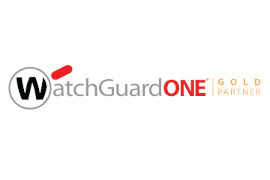Why Your Business Needs to Upgrade from Windows 7 to Windows 10 Now

With Microsoft’s Windows 7 End of Life (EOL) phase beginning in January 2020, now is the time for your business to upgrade from Windows 7 to Windows 10. Here we take a quick look at what End of Life means for your business and your upgrade options.
What is Windows 7 End of Life?
Microsoft releases new Operating Systems (OS) every few years, the purpose of which is to improve upon the previous generation. A new release brings with it the most current features, improved security and the flexibility to tailor your digital workspace to your needs. And with each new generation, Microsoft focuses its resources on providing support for only the most recently released operating system.
When is it happening?
After its 10-year reign as Microsoft’s most widely used OS, Windows 7 will begin its EOL phase on 14th January 2020. This means that there will no longer be any technical support, software updates or security fixes and updates for this version of Windows.
What does this mean for your business?
The implications are far and wide, but the most pressing issue is that of security. Without a dedicated support network in place, using Windows 7 could leave you wide open to viruses and security breaches. It’s widely known that hackers wait for EOL phasing out of support before exploiting vulnerable systems. Plus, running unprotected software could result in your business being in breach of current GDPR guidelines.
Also, software which hasn’t been updated periodically can lead to slow, sluggish and annoyingly glitchy performance. This can sometimes have a devastating impact on business.
So, what are your options?
For many businesses, the costs can be intimidating. But there are a few flexible options to keep in mind:
1. Buy, rent or lease a new Windows 10 computer
Windows 7 EOL means that virtually every new computer on the market comes with Windows 10 pre-installed. And transferring your files to a new computer couldn’t be easier. Options include using Cloud storage and external storage options such as a USB drive or SD card. Bear in mind that manufacturers are switched on to the fact that there may be a surge in the demand for new computers. Prices will reflect that, so it’s worth also researching lease options, which can be surprisingly good value for money.
2. Upgrade your existing computers
Upgrading your existing computers can be the more financially viable option for many companies, especially if the computers in question are current models. Please check the minimum specifications required to upgrade.
3. Windows 7 Support Extension
Where an upgrade is just not currently possible – for instance, businesses who rely on Windows 7 embedded versions in conjunction with Line of Business apps – there is the option of support extension in the form of Extended Security Updates (ESU). Be aware, this provides security updates only and none of the other support features that come with Microsoft support. There is a rolling charge for this service.
The prospect of initiating a Windows 10 upgrade can seem overwhelming in the context of resources. But changeover is inevitable, and the above options can be used interchangeably and gradually. So, with a little planning and budgeting, there is still time to protect your business.
Need a hand?
If you haven’t yet planned for the changeover, we can support you with both planning and implementation. Give our ultra-friendly team a shout to see how we can help you to make a smooth transition.



